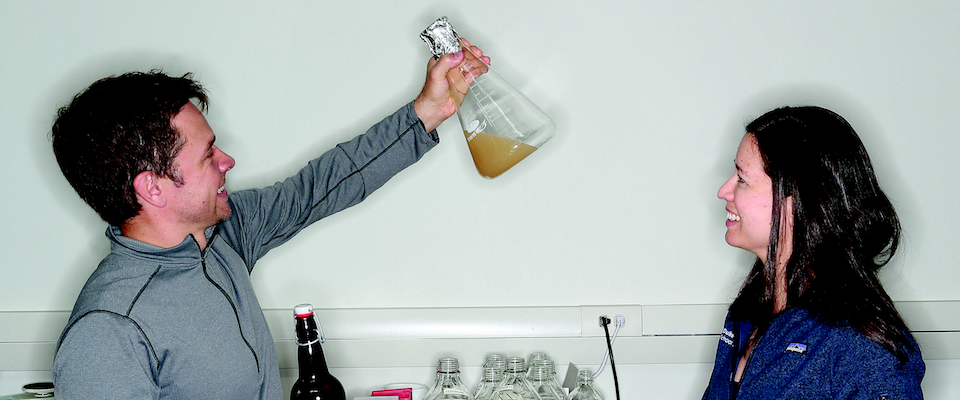UC Berkeley bioengineer John Dueber knows too well that sometimes the most important scientific discoveries have harmful consequences. Just recently, Dueber and a team of scientists discovered the final step in modifying common yeast cells to manufacture opiates. Their finding was published in the July issue of Nature Chemical Biology, alongside a warning urging scientists and policymakers to work together to address the development’s possible consequences.
This discovery could have a huge payoff: It’s not just a cheaper, purer source of medical morphine, but has potential “anti-cancer” properties. The downside, however, could be just as significant—potentially spawning an industry of DIY enthusiasts who, instead of brewing beer, are making heroin.
Scientists had already been working on genetically engineering yeast cells that could use glucose to produce opiates. Developing such a technique would create a consistent source of medical morphine, one that wouldn’t rely on the sometimes volatile and problematic opium market. A controlled method would also allow for more-precise manufacturing; fine-tuning such a complex method, however, has been a challenge.
…scientists will be able to manipulate the yeast to create opiate painkillers that are less addictive.
Dueber and his Berkeley colleagues have solved a crucial missing link in the process. Up until the team’s discovery, scientists had struggled to find a way to convert the amino acid tyrosine into L-DOPA, one of the intermediary molecules necessary for converting glucose to morphine. It was Berkeley doctorate student Will DeLoache who, while working on another project, realized that Mirabilis jalapa (the four o’clock flower) would light up in the presence of L-DOPA. This fluorescent marker would inform scientists when their efforts were successful, in turn allowing them to develop the next step—converting L-DOPA into (S)-reticuline, the precursor to many opiates. Two different yeast strains are currently required for the synthesis, but Dueber is confident that in the next two or three years, scientists will be able to engineer a single yeast strain that can do it all.
One huge advantage of the new process, Dueber explains, is that scientists will be able to manipulate the yeast to create opiate painkillers that are less addictive. But he says the most exciting part of the discovery lies in prospective outcomes not yet fully explored. In the future, scientists could adapt the same process to change the structure of other plant molecules that have anti-cancer properties into what he calls “unnatural natural molecules.”
“The plant might not have had the evolutionary pressure to make the best human anti-cancer drug,” he says, “but we can [do it] in the labs.”
Still, Dueber tempers his excitement with caution. “I think this is an interesting test case,” he says, “in that the potential illicit uses are very apparent.” Notably, someone wanting to make heroin or another illicit opiate might do so “using little else but a yeast brewing kit.” Although he doesn’t know yet what a solution might look like, Dueber calls the problem “good fodder for having a grounded discussion” between scientists and policymakers.
—Natalie Stevenson
From the Fall 2015 Questions of Race issue of California.





















